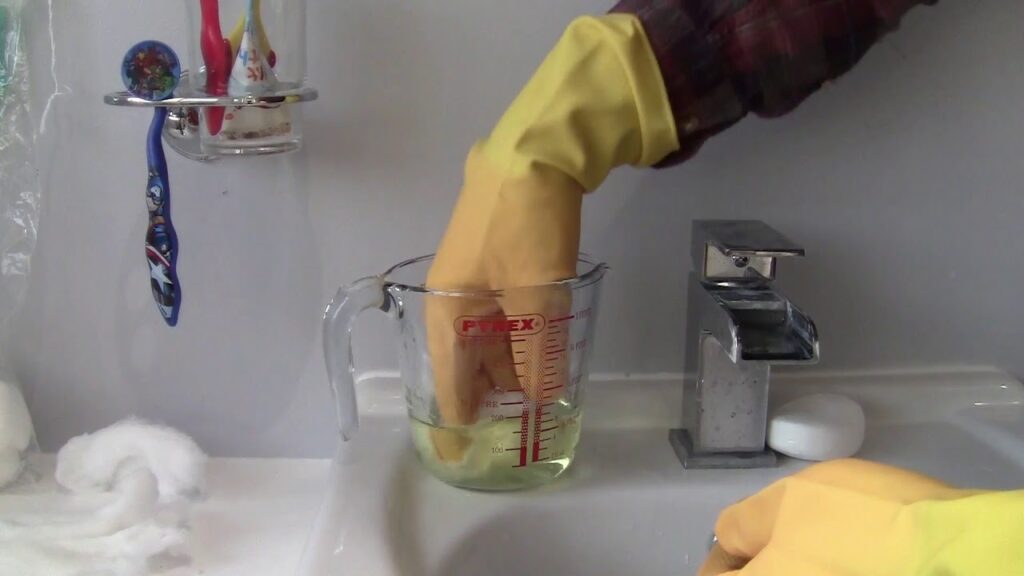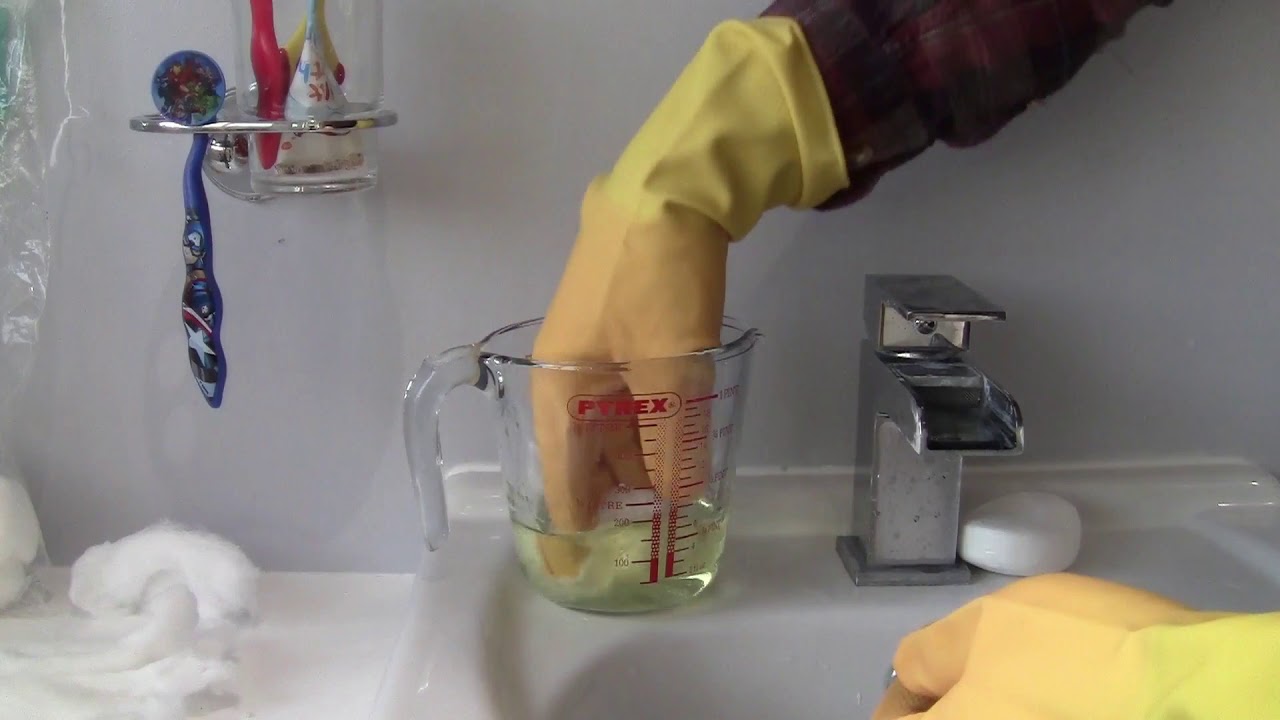
The Ultimate Guide to Clean Silicone Caulk: Removing Stains and Preventing Mold
Silicone caulk is a versatile and essential sealant used in various applications, from bathrooms and kitchens to windows and doors. Its waterproof and flexible nature makes it ideal for preventing leaks and drafts. However, silicone caulk is susceptible to staining, discoloration, and mold growth over time. Knowing how to clean silicone caulk effectively is crucial for maintaining a clean and healthy home. This comprehensive guide will provide you with the knowledge and techniques needed to remove stains, prevent mold, and keep your silicone caulk looking its best.
Why Does Silicone Caulk Get Dirty?
Understanding why silicone caulk becomes dirty is the first step toward effective cleaning and prevention. Several factors contribute to the discoloration and staining of silicone caulk:
- Moisture: Silicone caulk is often used in areas with high moisture levels, such as bathrooms and kitchens. This constant exposure to moisture creates an ideal environment for mold and mildew growth.
- Soap Scum: In showers and bathtubs, soap scum can accumulate on the surface of the caulk, providing a breeding ground for bacteria and fungi.
- Hard Water: Hard water contains minerals that can leave deposits on the caulk, causing discoloration and a rough texture.
- Dirt and Grime: Everyday dirt, dust, and grime can settle on the caulk, especially in high-traffic areas.
- Lack of Ventilation: Poor ventilation in bathrooms and kitchens can exacerbate the problem by trapping moisture and promoting mold growth.
Identifying the Type of Stain
Before you start cleaning, it’s important to identify the type of stain you’re dealing with. This will help you choose the most effective cleaning method. Common types of stains on silicone caulk include:
- Mold and Mildew: These appear as black, green, or brown spots and are often accompanied by a musty odor.
- Soap Scum: Soap scum is a white or gray film that can make the caulk feel slippery.
- Hard Water Stains: These appear as white or yellowish deposits that are difficult to remove.
- General Dirt and Grime: This can range from light discoloration to heavy buildup, depending on the level of exposure.
Essential Tools and Materials for Cleaning Silicone Caulk
Having the right tools and materials on hand will make the cleaning process much easier and more efficient. Here’s a list of essentials:
- Spray Bottle: For applying cleaning solutions.
- Scrub Brush: A small, stiff-bristled brush for scrubbing the caulk. An old toothbrush works well for tight spaces.
- Microfiber Cloths: For wiping down the caulk after cleaning.
- Gloves: To protect your hands from harsh chemicals.
- Safety Glasses: To protect your eyes from splashes.
- Cleaning Solutions: Choose from a variety of options, including bleach, vinegar, baking soda, and commercial mold and mildew removers.
- Putty Knife or Caulk Removal Tool: For removing old or damaged caulk.
Cleaning Silicone Caulk: Step-by-Step Guide
Follow these step-by-step instructions to effectively clean silicone caulk and restore its appearance:
Preparation
- Ventilate the Area: Open windows and doors to ensure proper ventilation, especially when using strong cleaning solutions.
- Protect Surfaces: Cover surrounding surfaces with plastic sheeting or towels to prevent damage from cleaning solutions.
- Wear Protective Gear: Put on gloves and safety glasses to protect your skin and eyes.
Cleaning Methods
Here are several methods you can use to clean silicone caulk, depending on the severity of the stains:
Bleach Solution
Bleach is a powerful disinfectant that can effectively kill mold and mildew. However, it should be used with caution and in a well-ventilated area.
- Mix a Solution: Combine one part bleach with two parts water in a spray bottle.
- Apply the Solution: Spray the solution directly onto the affected areas of the caulk.
- Let It Sit: Allow the solution to sit for 10-15 minutes to penetrate the stains.
- Scrub the Caulk: Use a scrub brush to gently scrub the caulk, paying attention to areas with heavy staining.
- Rinse Thoroughly: Rinse the caulk with clean water to remove any remaining bleach solution.
- Dry the Area: Use a clean microfiber cloth to dry the caulk and surrounding surfaces.
Vinegar Solution
Vinegar is a natural and effective cleaning agent that can kill mold and mildew without the harsh chemicals of bleach.
- Mix a Solution: Fill a spray bottle with undiluted white vinegar.
- Apply the Solution: Spray the vinegar directly onto the affected areas of the caulk.
- Let It Sit: Allow the vinegar to sit for at least one hour, or preferably overnight, for best results.
- Scrub the Caulk: Use a scrub brush to gently scrub the caulk, paying attention to areas with heavy staining.
- Rinse Thoroughly: Rinse the caulk with clean water to remove any remaining vinegar.
- Dry the Area: Use a clean microfiber cloth to dry the caulk and surrounding surfaces.
Baking Soda Paste
Baking soda is a mild abrasive that can help remove stains and deodorize the caulk.
- Make a Paste: Mix baking soda with a small amount of water to create a thick paste.
- Apply the Paste: Apply the paste directly onto the affected areas of the caulk.
- Let It Sit: Allow the paste to sit for 30 minutes to an hour.
- Scrub the Caulk: Use a scrub brush to gently scrub the caulk.
- Rinse Thoroughly: Rinse the caulk with clean water to remove any remaining baking soda.
- Dry the Area: Use a clean microfiber cloth to dry the caulk and surrounding surfaces.
Commercial Mold and Mildew Removers
There are many commercial mold and mildew removers available that are specifically designed to clean silicone caulk. These products often contain stronger chemicals and may be more effective for stubborn stains. Always follow the manufacturer’s instructions when using these products.
- Apply the Product: Spray or apply the product directly onto the affected areas of the caulk, following the manufacturer’s instructions.
- Let It Sit: Allow the product to sit for the recommended amount of time.
- Scrub the Caulk: Use a scrub brush to gently scrub the caulk.
- Rinse Thoroughly: Rinse the caulk with clean water to remove any remaining product.
- Dry the Area: Use a clean microfiber cloth to dry the caulk and surrounding surfaces.
Final Touches
- Inspect the Caulk: After cleaning, inspect the caulk for any remaining stains or damage.
- Repeat as Necessary: If necessary, repeat the cleaning process or try a different method.
- Apply a Sealant: Consider applying a sealant to protect the caulk from future staining and mold growth.
Preventing Mold and Mildew Growth on Silicone Caulk
Prevention is always better than cure. Here are some tips to prevent mold and mildew growth on your clean silicone caulk:
- Improve Ventilation: Ensure proper ventilation in bathrooms and kitchens by opening windows, using exhaust fans, or installing dehumidifiers.
- Dry Surfaces: Wipe down surfaces after each use to remove excess moisture.
- Regular Cleaning: Clean the caulk regularly with a mild cleaning solution to prevent buildup.
- Use Mold-Resistant Caulk: When replacing caulk, choose a mold-resistant product specifically designed for wet environments.
- Address Leaks Promptly: Fix any leaks or water damage immediately to prevent moisture buildup.
When to Replace Silicone Caulk
Sometimes, no matter how hard you try, you can’t clean silicone caulk effectively. If the caulk is severely damaged, cracked, or peeling, it’s time to replace it. Here’s how:
- Remove the Old Caulk: Use a putty knife or caulk removal tool to carefully remove the old caulk.
- Clean the Surface: Clean the surface thoroughly to remove any remaining residue.
- Apply New Caulk: Apply a new bead of silicone caulk, ensuring a smooth and even finish. [See also: How to Apply Silicone Caulk Like a Pro]
- Smooth the Caulk: Use a caulk smoothing tool or your finger to smooth the caulk and remove any excess.
- Allow to Cure: Allow the caulk to cure according to the manufacturer’s instructions before exposing it to water.
Choosing the Right Silicone Caulk
Selecting the right type of silicone caulk is crucial for long-lasting results. Consider the following factors when choosing caulk:
- Application: Choose a caulk specifically designed for the intended application, such as bathroom, kitchen, or exterior use.
- Mold Resistance: Opt for a mold-resistant caulk to prevent future growth.
- Flexibility: Choose a flexible caulk that can withstand movement and temperature changes.
- Color: Select a color that matches your existing fixtures or décor.
DIY vs. Professional Cleaning
While many people can successfully clean silicone caulk themselves, there are times when professional cleaning services are the best option. Consider hiring a professional if:
- You have extensive mold or mildew growth.
- You are uncomfortable using harsh chemicals.
- You lack the time or tools to do the job yourself.
- The caulk is severely damaged and needs to be replaced.
Conclusion
Clean silicone caulk is essential for maintaining a clean, healthy, and aesthetically pleasing home. By understanding the causes of staining and mold growth, using the right cleaning methods, and implementing preventative measures, you can keep your silicone caulk looking its best for years to come. Whether you choose to tackle the job yourself or hire a professional, remember that regular maintenance is key to preventing problems and extending the life of your caulk. Don’t let dirty caulk ruin the look of your home – take action today to keep it clean and fresh. Remember to always practice safety precautions when using any cleaning solutions. With the right approach, you can easily clean silicone caulk and enjoy a cleaner, healthier living space. Properly maintained clean silicone caulk adds value to your home and prevents costly repairs down the line. Make clean silicone caulk a part of your regular home maintenance routine. The benefits of maintaining clean silicone caulk are well worth the effort. Invest in quality products to clean silicone caulk effectively. Always prioritize safety when you clean silicone caulk. To achieve the best results, clean silicone caulk regularly. Prolong the life of your caulk by keeping it clean silicone caulk. Prevent future problems by learning how to clean silicone caulk properly. A little effort to clean silicone caulk goes a long way. Make sure to dry the area thoroughly after you clean silicone caulk. You’ll be amazed at the difference when you clean silicone caulk. Enjoy a cleaner, healthier home by keeping your clean silicone caulk.

